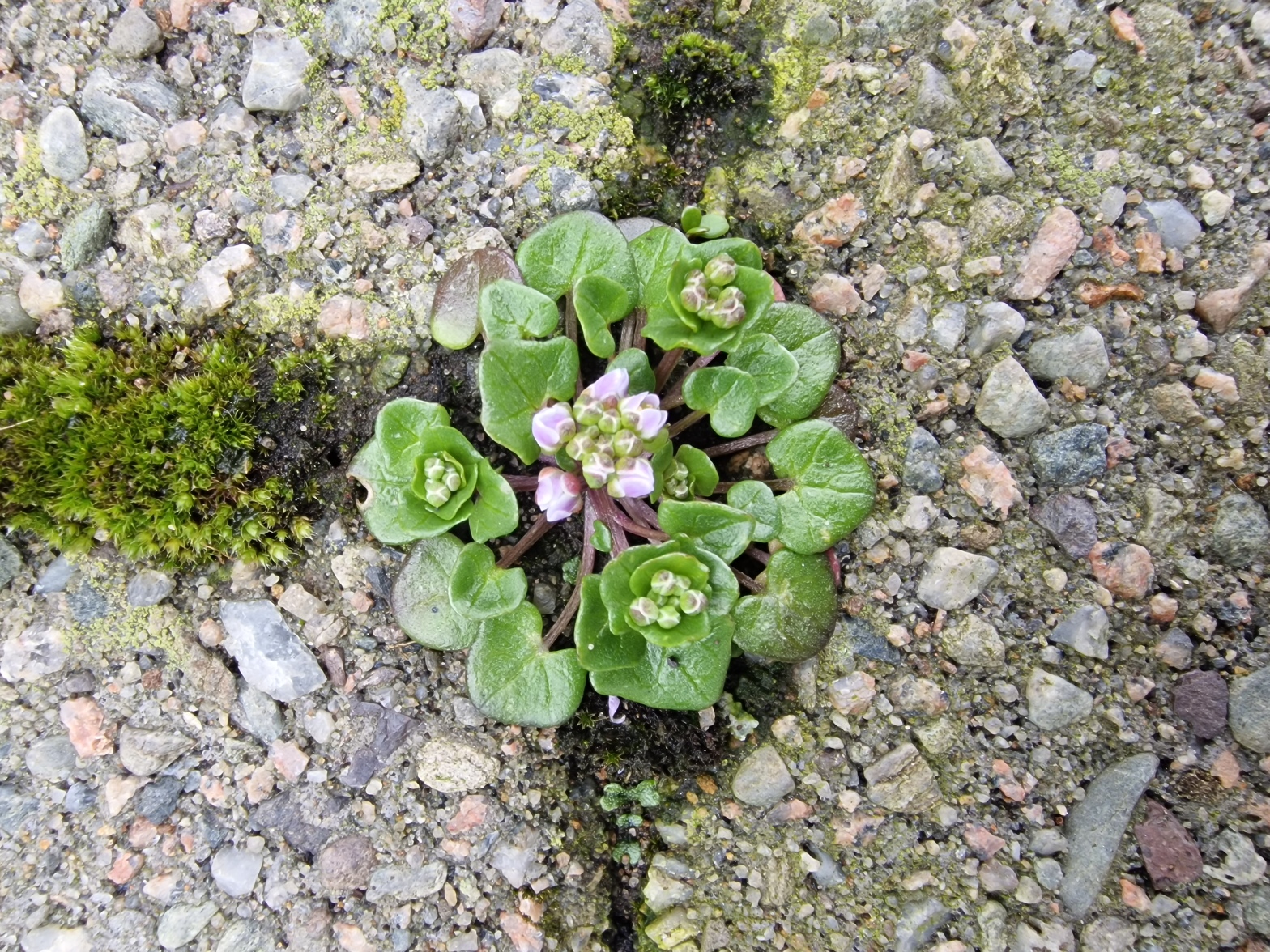These are native plants belonging to the cabbage family (Brassicaceae). They have simple leaves, usually hairless and somewhat fleshy. They tend to be coastal species. World-wide there are about 30 species of Cochlearia but we will focus on the two most common in Scotland, officinalis and danica.
Linnaeus named them. The name Cochlearia is derived from the Greek word for a spoon, and Spoonwort is an alternative English name. The medicinal use of Cochlearia was obviously known to Linneas and so he called the common one officinalis, which is monastic Latin for ‘of the medical store-room’. He also named C. danica; presumably he didn’t know its entire European distribution and thought it was mostly Danish.
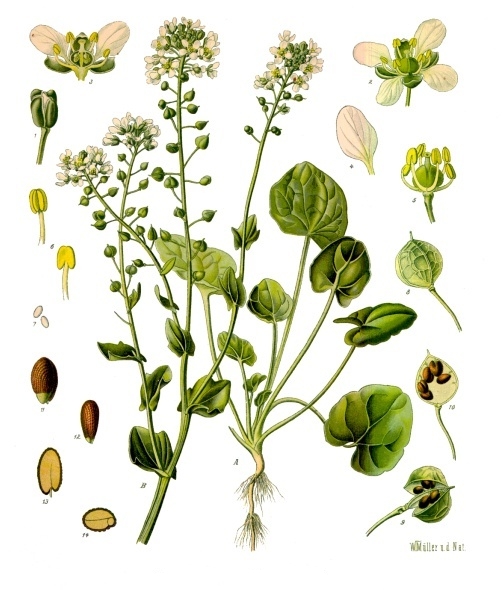
Why are these plants called scurvy-grass? They are not a grass at all, but there is a connection to scurvy.
Scurvy is a disease resulting from a lack of vitamin C (ascorbic acid). Early symptoms of deficiency include weakness, feeling tired and sore arms and legs. Without treatment, decreased red blood cells, gum disease, changes to hair, and bleeding from the skin may occur. Death is certain unless remedy can be found.
John Brand in 1701 noted that Shetland Islanders have much scurvy-grass: “God so ordering it in his wise Providence … seeing the scurvy is a common disease of the country, they should have the remedy at hand”. He was a Minister of the Church of Scotland, known for his writing about Orkney. It is now widely known that any plant with vitamin C will cure scurvy very quickly, but Cochlearia is one of the best.

Scurvy was the scourge of maritime explorers. Vasco da Gama lost two thirds of his crew to the disease while making his way to India in 1499 whilst Magellan lost more than 80 per cent of his while crossing the Pacific in 1520. Over two centuries later, Captain Cook and crew of the Endeavour famously avoided scurvy on their epic voyage to Australia. The popular myth is that he fed the men with scurvy-grass which he plucked from the shores of distant lands. It’s a great story but the truth appears to be more complex. Scurvy grass Cochlearia officinalis is not found in the southern hemisphere.
In Cook’s journal he talks of collecting “celery and scurvygrass”. Impossible. Although the already-famous young botanist Joseph Banks was aboard the HMS Endeavour it seems that Cook himself was rather ignorant about plant names (too busy writing his huge journals?). He records serving his crew with sauerkraut. This fermented cabbage dish was popular in Germany but at first the crew didn’t like it. Eventually, when he placed it on the tables, the men took to it and then it had to be rationed. It is now known to be a rich source of Vitamin C. Moreover, Cook may have harvested other plant materials to brighten the diet. The rare Kerguelen cabbage (Pringlea antiscorbutica) looks very much like a cabbage, it belongs to the Brassicaceae, it is rich in vitamin C and found in islands of the Southern seas; and Lepidium oleraceum is a herb in the family Brassicaceae, endemic to New Zealand. Its English common name is Cook’s scurvy grass.
Did Cook really know about the benefit of vegetables? James Lind was a naval surgeon from Edinburgh, serving on the HMS Salisbury. In 1747, he carried out experiments on sickening crew members. He discovered that oranges and lemons cured scurvy but all other ‘remedies’ including vinegar, mustard and garlic had no effect. However, it was decades before the Admiralty took any notice of this, and meanwhile many crew members needlessly died. The date of Cook’s expedition to Australia and New Zealand was later, 1768, and so it is just possible that Cook had an inkling of how to prevent scurvy aboard his HMS Endeavour. I have read that ship’s doctors and captains elsewhere discovered cures for scurvy (fruit and veg.) but their reports were dismissed as ‘anecdotal’ by the authorities.

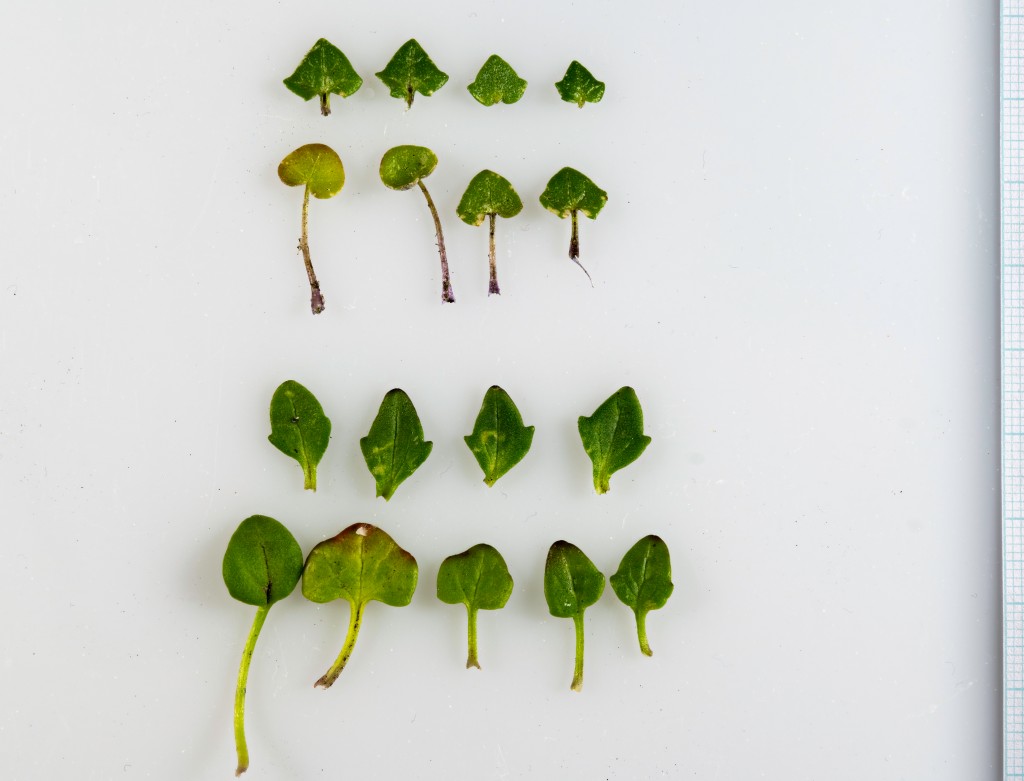
The Scurvy-grass of our northern shores is mostly C. officinalis, but it is highly variable species. One of the best descriptions is that of Clapham, Tutin and Warburg (1981). Within the group officinalis they recognise several species: C. islandica (from Orkney), C. scotica (northern Britain including the Scottish islands), and C. atlantica (Outer Hebrides, Mull and Arran). There are inland species: C. pyrenaica (old lead mines), C. alpina (mountains and the Cheddar Gorge and C. micacea (high mountains in Scotland). They have variable chromosome numbers (Elkington 1984) and hybrids do occur (Stace 2019). In the BSBI’s handbook Crucifers of Great Britain and Ireland (Rich 1991) there are detailed descriptions of these species complete with line drawings and ecological notes. But should we regard them as species, microspecies or what?

Light is shed on this question by Estelle Gill (2007). Her PhD thesis may be downloaded freely from Edinburgh University’s library (click on the url below). She pointed out that you really cannot distinguish these species from their morphology. She carried out a thorough investigation using the best tools of molecular genetics available at that time. Her conclusion was “Taking into consideration a history of taxonomic controversy, along with the data presented in this thesis, it appears that the Cochlearia officinalis s.l. complex cannot be divided confidently into either species or subspecies classifications and instead appears to consist of a series of ecotypic variants. This supports the use of a broad species concept that encompasses all the taxa currently delimited within it”.
This may not be the final word, but for now the species mentioned above are best regarded as ecotypes of C. officinalis.


Cocclearia danica is however a quite separate species. It is an annual whereas C. officinalis sensu lato is a biennial or perennial, with a strong tap root. C. danica has smaller flowers (3-5 mm) whereas C. officinalis has flowers exceeding 5 mm. The plants differ in size – Cochlearia danica is a small plant (up to 20 cm but often just a few cm) whereas officinalis is 5-50 cm. Most importantly, danica has 2n = 42 chromosomes whilst officinalis varies (2n = 12, 24, or 26).
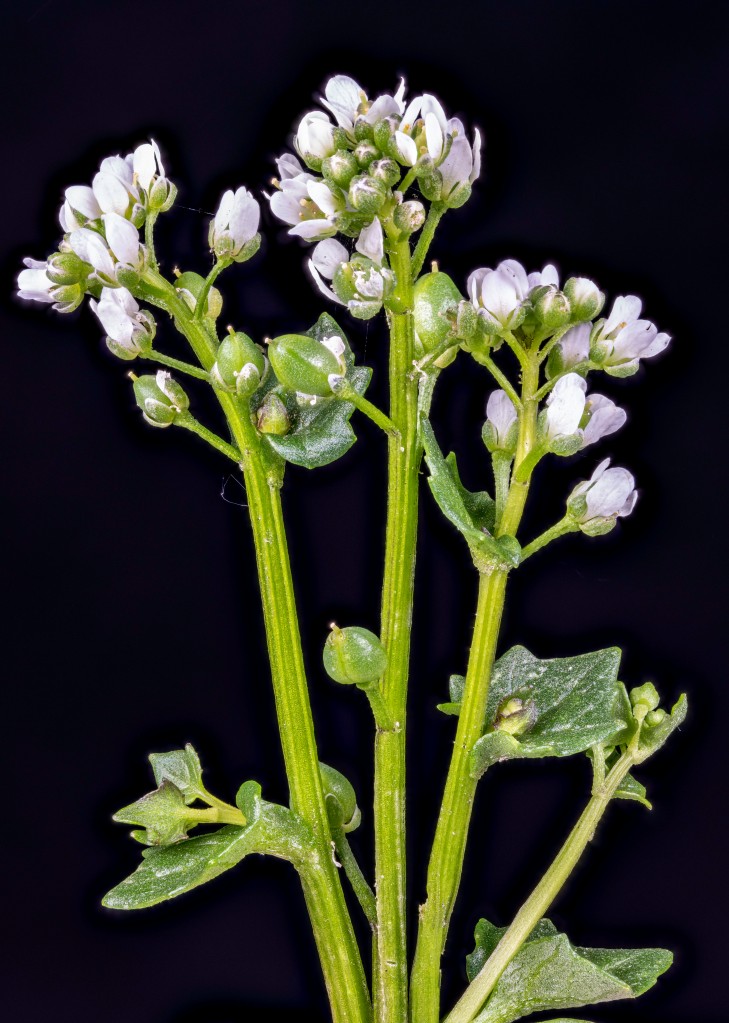
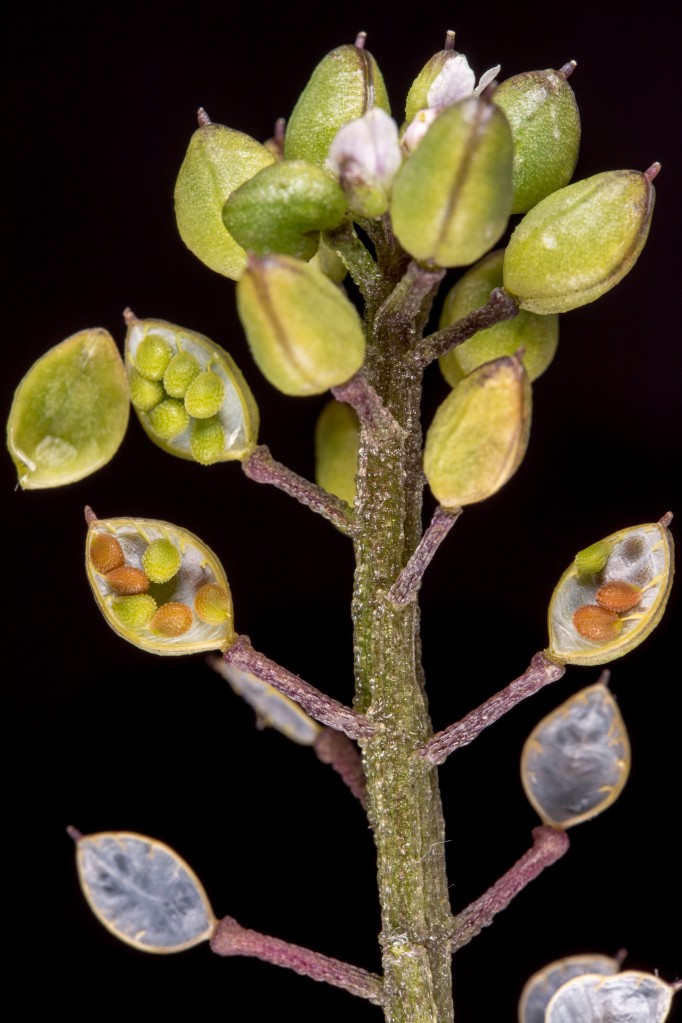
However, they can be hard to tell apart, and they hybridise where they occur together (Fearn 1977). Both danica and officinalis have glossy, rather succulent, usually kidney-shaped leaves. Some of danica’s resemble tiny ivy leaves, and its stem-leaves are mostly stalked, not clasping the stem at their base. In officinalis the stem leaves usually do clasp the stem. Flower colour is rather variable: danica is often pale-lilac and officinalis is usually white.
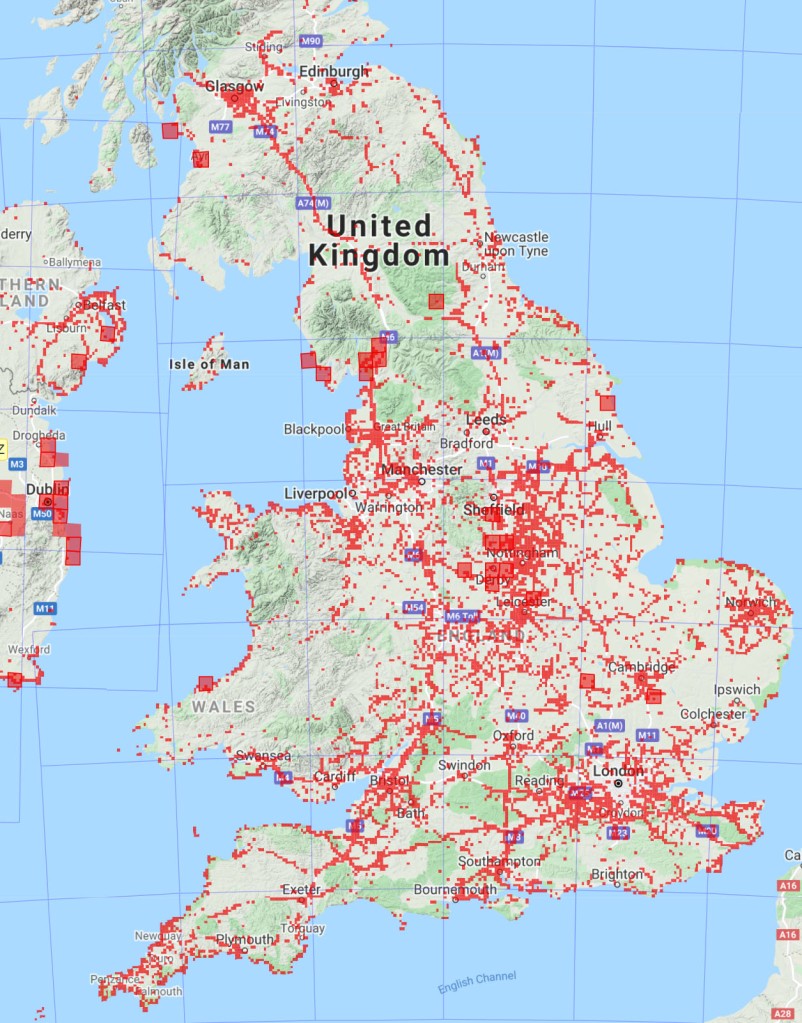

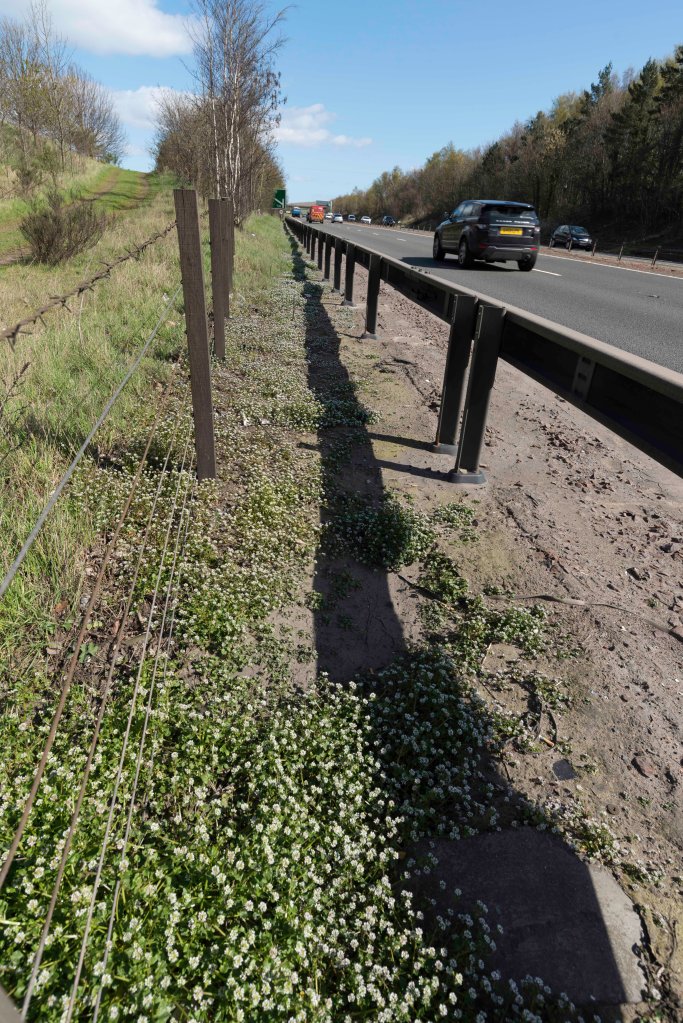
Throughout Europe C. danica is one of several coastal species found on inland road verges, owing to the practice of road-salting in winter (Fekete et al. 2018). In April/May the central reservations of many British motorways become lilac-coloured with its flowers. In some cases, these plants colonise urban roadsides. Only a tiny fraction of the European flora can tolerate sodium chloride (the ‘halophytes’) and for most species it is quite toxic.
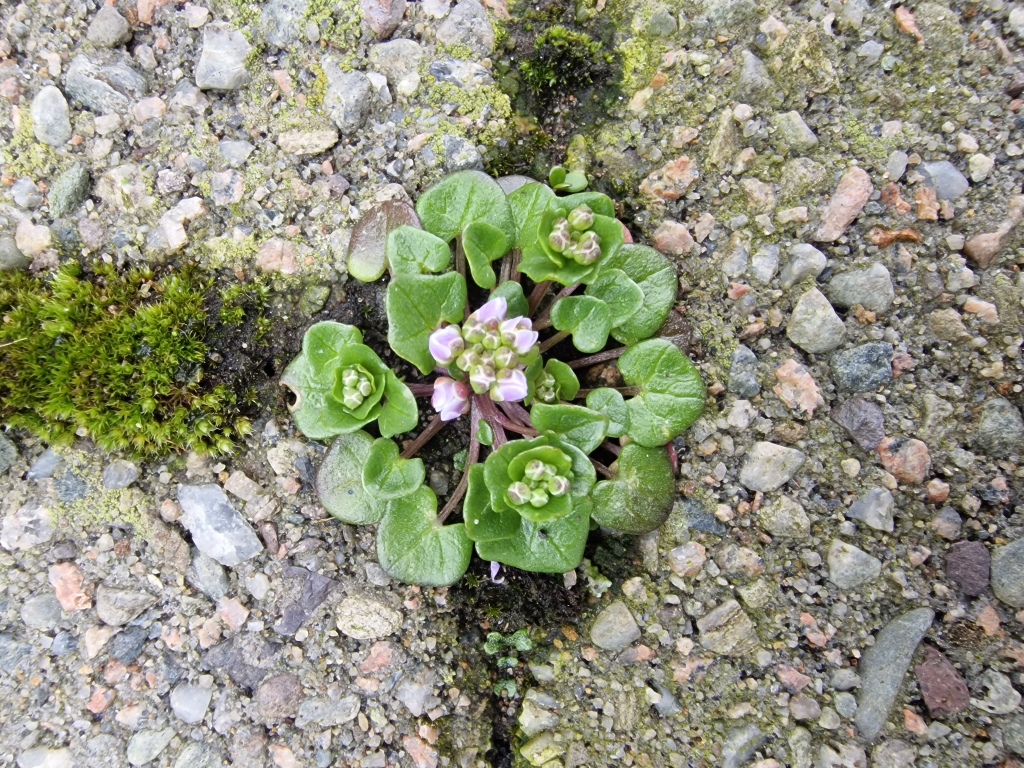
Detail of C. danica, colonising paving stones in South Ayrshire, just 100 metres from the sea. Image, March 23rd 2024: John Grace.
The question arises: do halophytes need sodium (Na+)? Sodium is not one of the essential micronutrients except in a few species – those with special biochemical pathways for photosynthesis (C4 and CAM). These pathways have not (so far) been demonstrated in the Brassicaceae but they do occur in some other maritime species (Suaeda maritima and Salicornia). Members of my own green-fingered family used to sprinkle salt on their beetroot seedlings to make them grow faster. The wild ancestor of beetroot is the sea beet, Beta maritima. Did the salt sprinkling work? Not sure, but the old gardeners’ tip turns up even today on blogs.


Two other species of Cochlearia deserve mention. The first is well-established in the south of Britain. – C. anglica, English Scurvy-grass. It is rather rare in Scotland and has its northern limit at Glasgow. The second is a newcomer – Richard Milne has pointed me to this one – C. megalosperma, a species I don’t know. He writes: “It’s a rare introduction in Britain currently placed in Cochlearia though it looks quite unlike our native species. It grows to about a metre tall, avoids saline habitats and hence lacks the fleshy succulent leaves of its smaller relatives. It has long been naturalised under a wall just by the car park at Humbie Kirk (east of Pathhead in East Lothian)”. It is a native of Spain, common in the South-east of Spain, yet it thrives in the much cooler conditions of Humbie and is absent from England. It’s a rather tall plant, as shown in the recent image below.
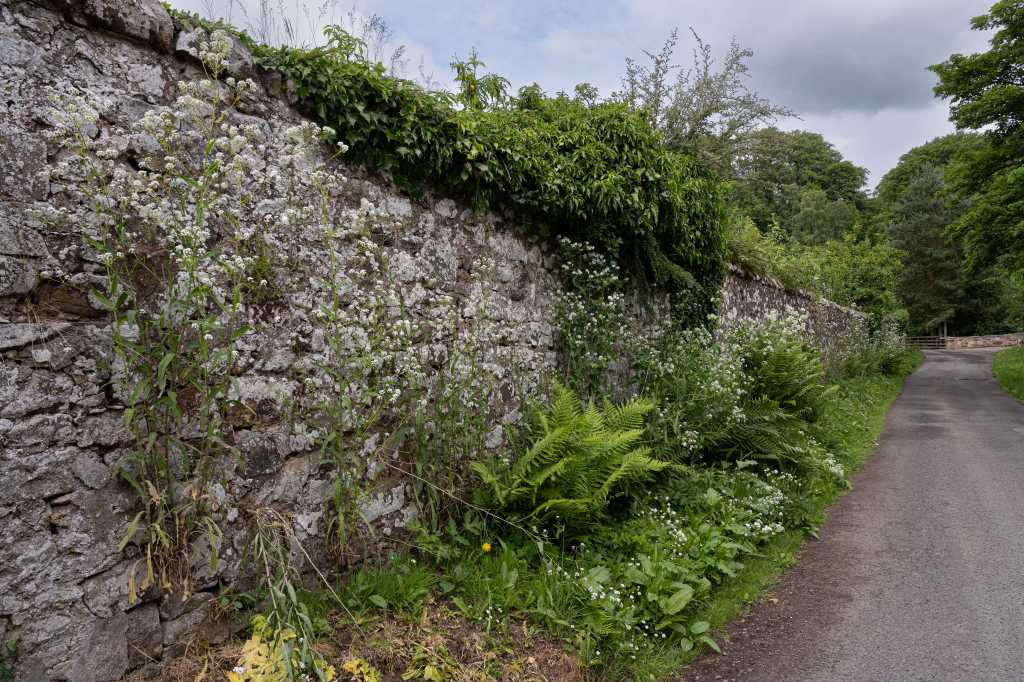
A tall relation of C. officinalis. Found adorning a wall at Humbie, a village in East Lothian, C. megalosperma is an extremely rare alien in Britain, coming from Spain and found in no other European country. Image: Chris Jeffree.
.
Footnote
Pliny the Elder (AD 28-79) noted in his Naturalis Historia that supplies of Herba brittanica were needed to treat the ailing legions. Possibly, Herba brittanica = Cochlearia officinalis. Just a thought.
References
Clapham AR, Tutin TG and Warburg EF (1981) Excursion Flora of the British Isles. Third Edition. Cambridge.
Cook J and Edwards P (1999) The Journals of Captain Cook abridged. Penguin.
Elkington TT (1984) Cytogenetic variation in the British Flora: origins and significance. New Phytologist 98, 101-118. https://nph.onlinelibrary.wiley.com/doi/abs/10.1111/j.1469-8137.1984.tb06100.x
Fearn GM (1977) A morphological and cytological investigation of Cochlearia populations in the Gower Peninsular, Glamorgan. New Phytologist 79, 455-458. https://doi.org/10.1111/j.1469-8137.1977.tb02226.x
Fekete R, Mesterhazy A, Valko O et al (2018) A hitch-hiker from the beach: the spread of the maritime halophyte Cochlearia danica along salted continental roads. Preslia 90, 23-37.
Gill E (2007) Conservation genetics of the species complex Cochlearia officinalis L. s.l. in Britain. PhD, University of Edinburgh. Click here to read:
Rich TCG (1991) Crucifers of Great Britain and Ireland. BSBI.
Stace C (2019) New Flora of the British Isles. Fourth Edition. C&M Floristics.
©John Grace with help from Chris Jeffree and Richard Milne
